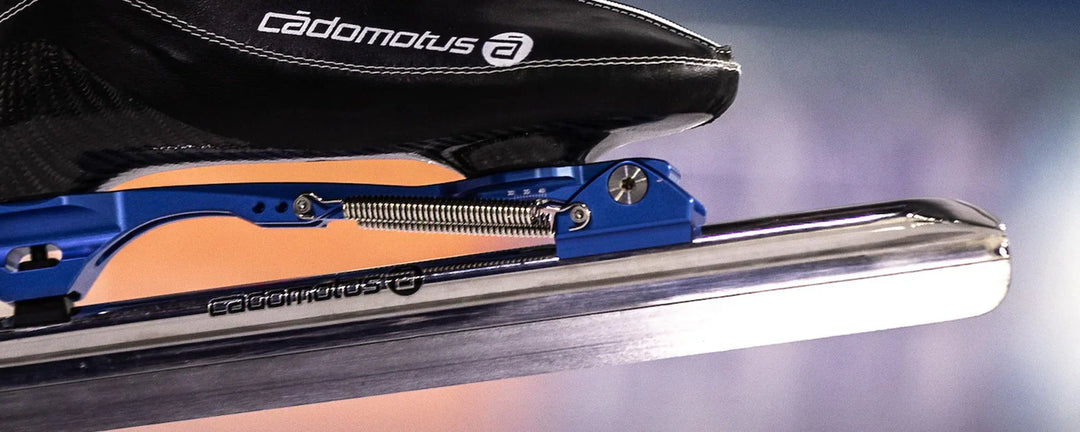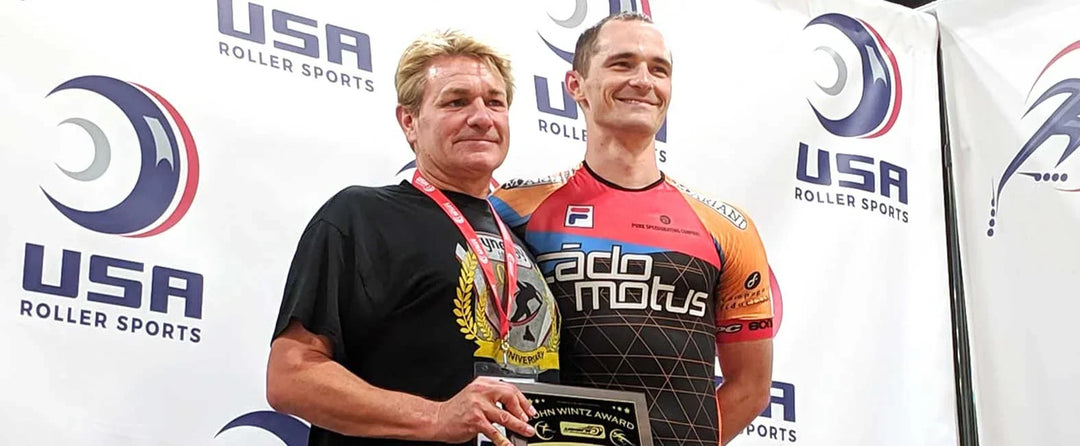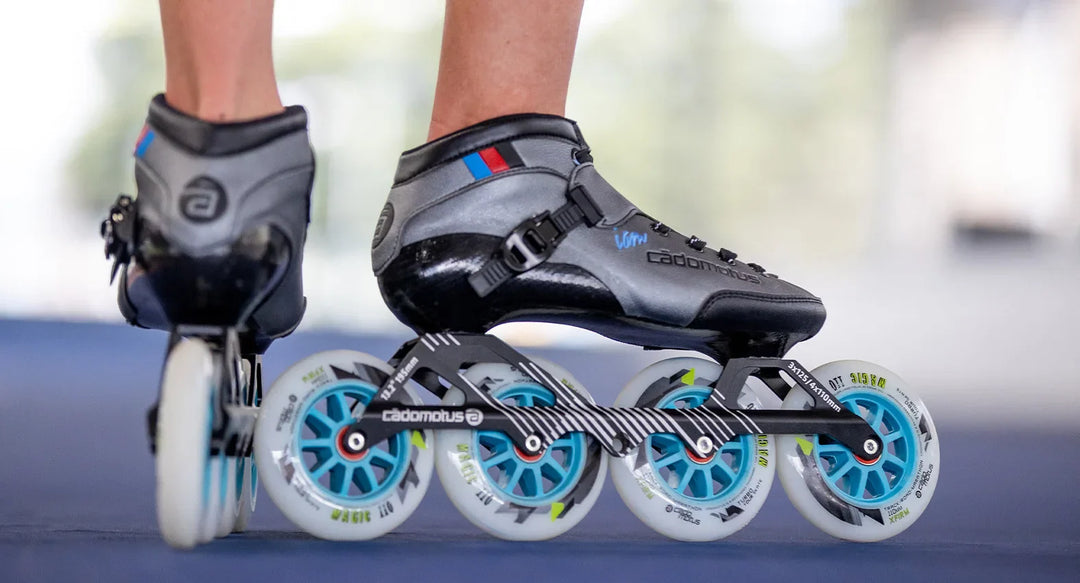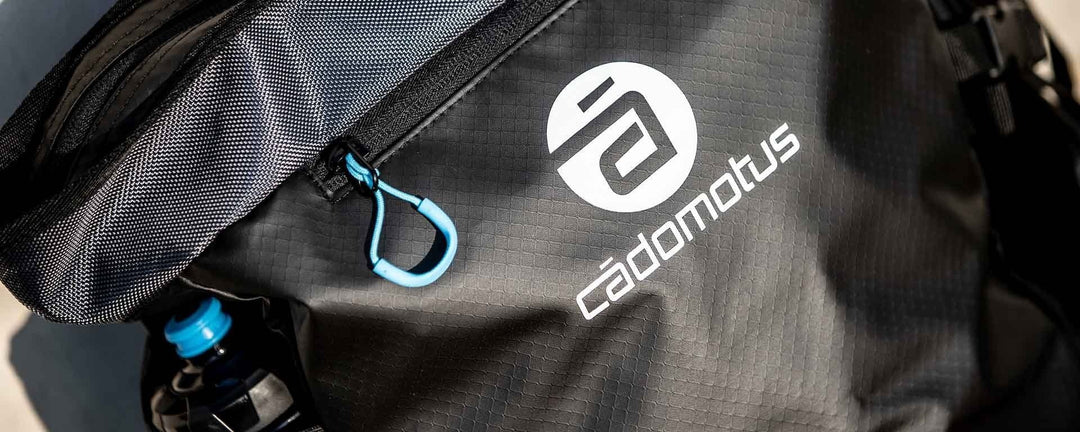Why clap skates are faster than classic skates (and it's probably not what you think)
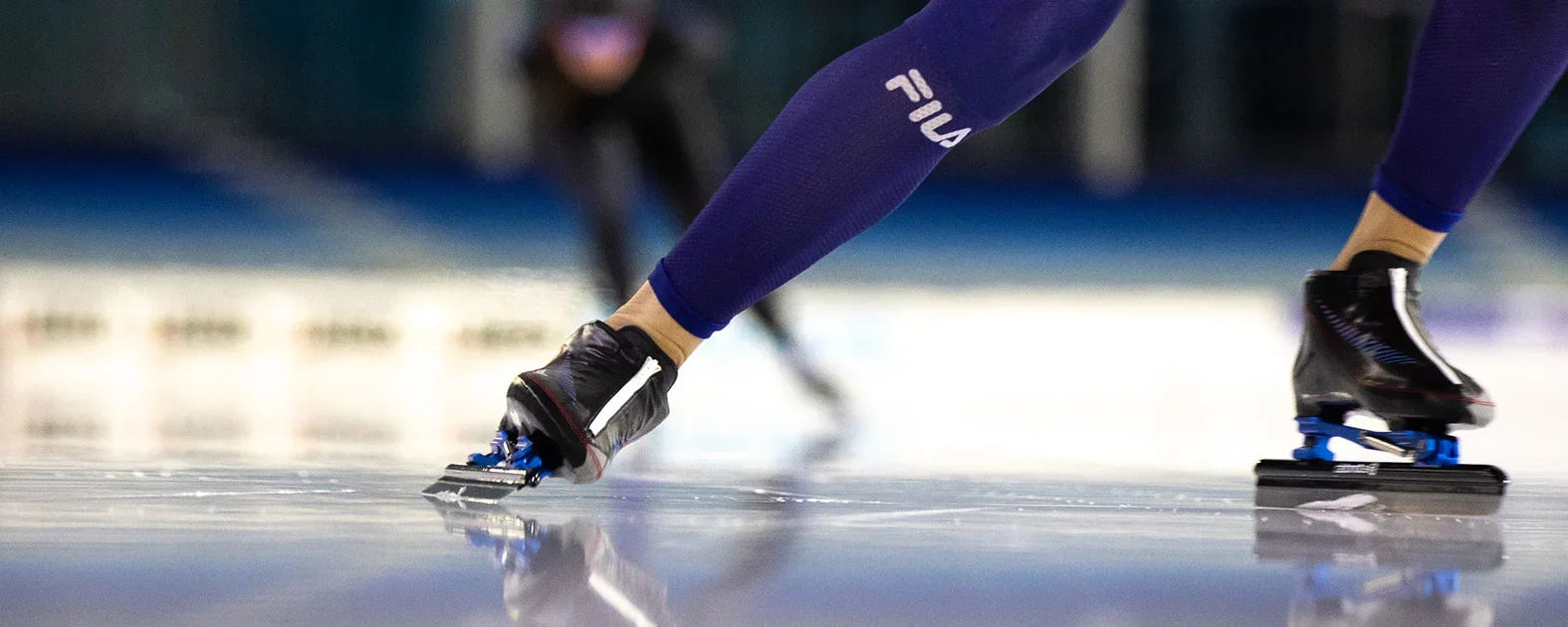
Today, it is almost impossible to imagine the world of speed skating without clap skates. Since their introduction in the mid-90s, they caused a revolution in the sport. But why exactly do clap skates make you go faster? The reasons are still widely misunderstood.
Misconceptions actually start with the name: when the spiritual father of the modern clap skate, Dr. Gerrit Jan van Ingen Schenau, developed it, he also gave his invention its name: clap skate. However, it’s not a nod to the classic clap sound the skate makes while in action, it comes from the mechanism that helps provide the extra push, or clap (“Klap” in Dutch also means “blow” or “bang”), in order to develop more speed.
The idea was that thanks to the clap mechanism, your ankle and knee would have a better and more complete extension than with a fixed skate: with your leg fully extended, the entire blade of the clap skate would then continue to slide on the ice. As a result, you would get more power out of each push, and less friction due to the scratching of the tip of the blade on the ice. This is the classic and typical advantage of clap skates that everyone has in mind, but the reality turns out to be slightly different.

No extension difference between fixed skates and clap skates
Some twenty years ago, sports scientist Han Houdijk saw how skaters spectacularly improved their performances when switching to clap skates. Fascinated by this observation, he decided to do his Ph.D. research on the subject of motion and discovered that the gain was not as much in the extension of the leg as it was in the change of pivot point of the foot. Houdijk noticed that the ankle extension was almost the same as the classic Norwegian skate and the clap skate. To his surprise, the top skaters he studied the movements of hardly reduced their extension on classical Norwegian skates, if at all. He also discovered that the loss of power due to the dragging of the tip of the blade on the ice was almost insignificant. Then it meant that the undeniable gains of the clap skate came from somewhere else.
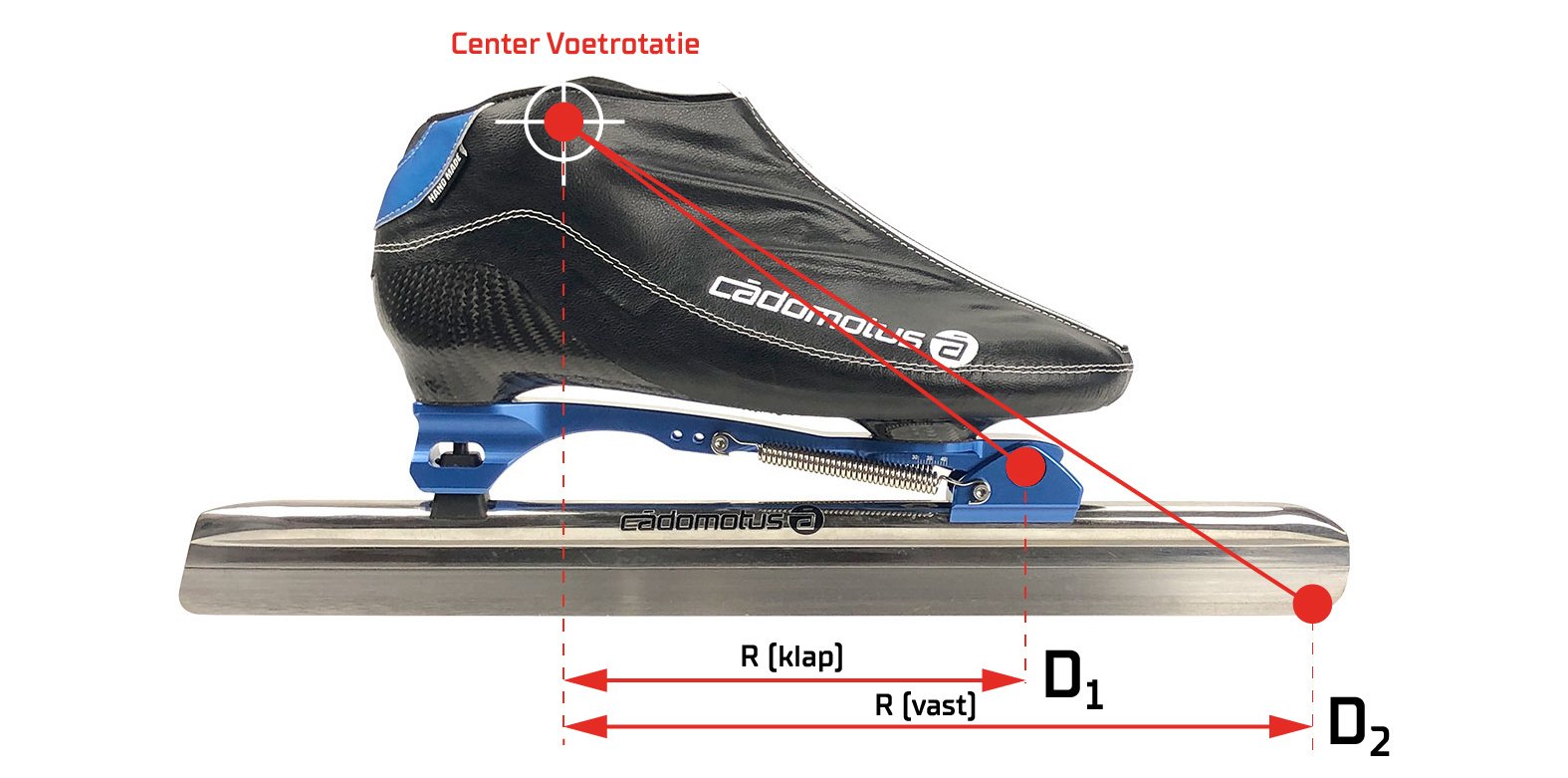
Improved timing with the clap skate
It turned out that the spot on which your foot pivots after the push was of much greater importance. Here are the observations: with a fixed skate, the rotation of the foot takes place around the tip of the blade. Thus, the ankle extension may be just as complete as with the clap skate, but it is much harder on the calf muscles and applying more resistance. That in turn affects the timing: the foot can only rotate in the late push-off phase when the knee is already (too) extended.

This is where the clap skate brings relief. The hinge point of the clap mechanism is located at the ball of the foot. In contrast to the fixed skate, the foot rotates on this hinge, and the calf muscles don’t have to work as hard. Resistance is reduced and the momentum of the push is transformed. Because you put – and need – less power on the push-off, both your knee and ankle extensions can be timed more accurately, which in turn makes you save even more energy as a consequence. In short, the whole knee and ankle movement is optimized and thus gains in efficiency.
Body height and blade length
On the basis of both computer simulations and research on the ice rink, Houdijk concluded that the position of the hinge is crucial, and is limited to a small area under the ball of the foot – a fact that Cadomotus takes into account in the development of their own skates. Balance and timing being extremely significant, it is a good reason to take a closer look at the correlation between your body height and the length of your blade. Don’t underestimate the consequences of a bad match! Your body size has nothing or little to do with your shoe size, it is better to match the length of your blade to your body height rather than your shoe size. For example, if you are small, but have big feet and are advised a (too) long blade, then timing problems similar to those described above will occur (yet on a small scale). And if you are tall with small shoe size, too small a blade can also cause improper balance, which would be counterproductive. Read here how this correlation works, and discover your optimal blade length according to your body size.
Adjustment of the pivot point
25 years after the clap skate revolution, we now skate considerably faster. Professional skaters take their turns at speeds over 60 kph, while trained recreational skaters also regularly hit the 50 kph mark. With the right timing, your calf muscles are relaxed and movements flow easily, which is why it’s so important to get on the ice with the right shoes. Indeed, with increased speeds, skating shoes have also been further developed: they have a harder carbon shell sole that will help you have more control of however fast you go and a slightly higher cut for extra ankle support.
All these concepts converge in the Pressure and Balance clap skates by Cadomotus. Moreover, the timing of your push-off is further enhanced with tubes made of DP980 dual-phase steel. This steel absorbs your energy to perfection, which improves your “rebound” – the response feeling you get from the skate after a strong push. The shoes offer the necessary firmness and comfort. For the crucial positioning of the pivot point, you can adjust it with rigorous precision on our Cadomotus skates.
[NEWSLETTER]
